
Appointment of a spark on the VAZ 2106, the reasons for its absence and troubleshooting
Content
The functioning of the VAZ 2106 power unit is inextricably linked with the formation of a spark, which is influenced by almost all elements of the ignition system. The appearance of malfunctions in the system is reflected in the form of problems with the engine: triplets, jerks, dips, floating revolutions, etc. occur. Therefore, at the first symptoms, you need to find and eliminate the cause of the malfunction, which every Zhiguli owner can do with his own hands.
There is no spark on the VAZ 2106
Sparking is an important process that ensures the start and stable operation of the power unit, for which the ignition system is responsible. The latter can be contact or non-contact, but the essence of its work remains the same - to ensure the formation and distribution of a spark to the desired cylinder at a certain point in time. If this does not happen, the engine may either not start at all or run intermittently. Therefore, what should be the spark and what could be the reasons for its absence, it is worth dwelling in more detail.
Why do you need a spark
Since the VAZ 2106 and other "classics" have an internal combustion engine, the operation of which is ensured by the combustion of the fuel-air mixture, a spark is needed to ignite the latter. To get it, the car is equipped with an ignition system in which the main elements are candles, high-voltage (HV) wires, a breaker-distributor and an ignition coil. Both spark formation as a whole and the quality of the spark depend on the performance of each of them. The principle of obtaining a spark is quite simple and boils down to the following steps:
- The contacts located in the distributor provide a low voltage supply to the primary winding of the high-voltage coil.
- When the contacts open, a high voltage is indicated at the output of the coil.
- The high-voltage voltage is fed through the central wire to the ignition distributor, through which a spark is distributed through the cylinders.
- A spark plug is installed in the head of the block for each cylinder, to which voltage is applied through the explosive wires, as a result of which a spark is formed.
- At the moment the spark appears, the combustible mixture ignites, ensuring the operation of the motor.

What should be the spark
Normal engine operation is possible only with a high-quality spark, which is determined by its color, which should be bright white with a blue tint. If the spark is purple, red or yellow, then this indicates a problem in the ignition system.
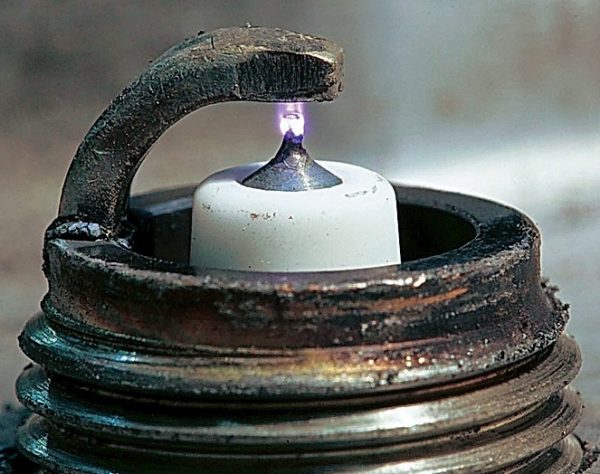
Read about tuning the VAZ 2106 engine: https://bumper.guru/klassicheskie-modeli-vaz/tyuning/tyuning-dvigatelya-vaz-2106.html
Signs of a bad spark
The spark can be either bad or completely absent. Therefore, you need to figure out what symptoms are possible and what could be the cause of problems with sparking.
No spark
The complete absence of a spark is manifested by the inability to start the engine. There can be many reasons for this phenomenon:
- Wet or broken spark plugs
- damaged explosive wires;
- break in the coil;
- problems in the distributor;
- failure of the Hall sensor or switch (on a car with a contactless distributor).
Video: search for a spark on the "classic"
Weak spark
The power of the spark also has a significant impact on the functioning of the power unit. If the spark is weak, then the combustible mixture may ignite earlier or later than necessary. As a result, power decreases, fuel consumption increases, failures occur in different modes, and the engine can also triple.
Tripping is a process in which one of the cylinders of the power plant works intermittently or does not work at all.
One of the reasons why the spark may be weak is the incorrect clearance of the contact group of the ignition distributor. For the classic Zhiguli, this parameter is 0,35–0,45 mm. A gap smaller than this value results in a weak spark. A larger value, at which the contacts in the distributor do not completely close, can lead to a complete absence of a spark. In addition to the contact group, other components of the ignition system should not be overlooked.
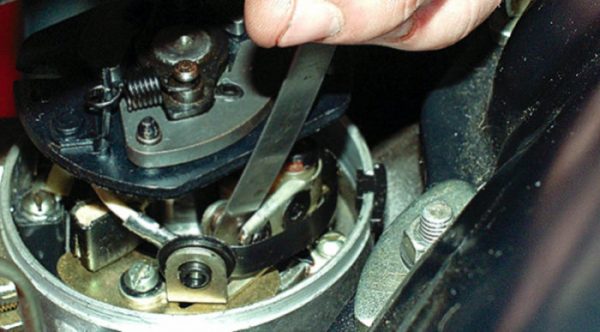

An insufficiently powerful spark is possible, for example, during a breakdown of spark plug wires, that is, when part of the energy goes to ground. The same thing can happen with a candle when it breaks through the insulator or a significant layer of soot forms on the electrodes, which prevents the breakdown of the spark.
Learn more about VAZ 2106 engine diagnostics: https://bumper.guru/klassicheskie-modeli-vaz/poleznoe/ne-zavoditsya-vaz-2106.html
Spark on wrong cylinder
Quite rarely, but it happens that there is a spark, but it is fed to the wrong cylinder. At the same time, the engine is unstable, troit, shoots at the air filter. In this case, there can be no talk of any normal operation of the motor. There may not be many reasons for this behavior:
- mixed up BB wires on the distributor cap;
- the cover on the distributor is incorrectly installed;
- spark plug wires are incorrectly connected to spark plugs.
The last point, although unlikely, since the length of high-voltage cables is different, but still it should be considered if there are problems with ignition. The above reasons arise, as a rule, due to inexperience. Therefore, when repairing the ignition system, you need to be careful and connect the explosive wires in accordance with the numbering on the cover of the distributor.
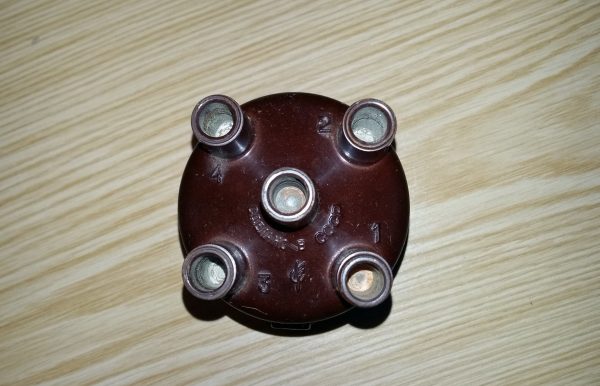

Check out the VAZ 2106 distributor device: https://bumper.guru/klassicheskie-modeli-vaz/elektrooborudovanie/zazhiganie/trambler-vaz-2106.html
Troubleshooting
Troubleshooting in the ignition system of the VAZ "six" must be carried out by elimination, checking sequentially element by element. It is worth dwelling on this in more detail.
Battery check
Since the battery is the power source when starting the car, it is with checking this device that it is worth starting the diagnosis. Faults with the battery appear when you try to start the engine. At this point, the indicator lights on the instrument panel go out. The reason can be either in poor contact on the terminals themselves, or simply in a weak battery charge. Therefore, the condition of the terminals should be checked and, if necessary, cleaned, tighten the mount. To prevent oxidation in the future, it is recommended to cover the contacts with a graphite smear. If the battery is discharged, then it is charged using the appropriate device.
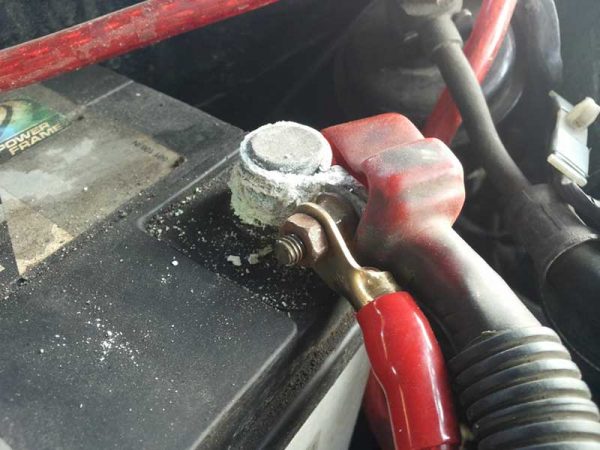

spark plug wires
The next elements that need to be checked for problems with sparking are BB wires. During external examination, the cables should not have any damage (cracks, breaks, etc.). To assess whether a spark passes through the wire or not, you will need to remove the tip from the candle and place it near the mass (5-8 mm), for example, near the engine block, and scroll the starter for several seconds.


At this time, a powerful spark should jump. The absence of such will indicate the need to check the high-voltage coil. Since it is impossible to determine by ear which of the cylinders does not receive a spark, the test should be performed in turn with all the wires.
Video: diagnostics of explosive wires with a multimeter


Watch this video on YouTube
Spark plug
Candles, though infrequently, but still fail. If a malfunction occurs, then with one element, and not with all at once. If a spark is present on the candle wires, then to check the candles themselves, they are unscrewed from the “six” cylinder head and put on a BB cable. The masses touch the metal body of the candle and scroll the starter. If the candle element is working, then a spark will jump between the electrodes. However, it may also be absent on a working spark plug when the electrodes are flooded with fuel.


In this case, the part must be dried, for example, on a gas stove, or another one should be installed. In addition, it is recommended to check the gap between the electrodes with a probe. For a contact ignition system, it should be 0,5-0,6 mm, for a non-contact one - 0,7-08 mm.
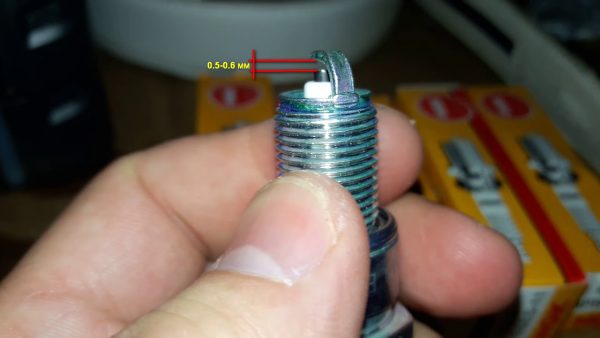

It is recommended to replace candles every 25 thousand km. run.
Ignition coil
To test the high voltage coil, you must remove the center cable from the distributor cover. By turning the starter, we check for the presence of a spark in the same way as with BB wires. If there is a spark, then the coil is working and the problem should be looked for elsewhere. In the absence of a spark, the problem is possible both with the coil itself and with the low-voltage circuit. To diagnose the device in question, you can use a multimeter. For this:
- We connect the probes of the device, switched on to the limit of measuring resistance, to the primary winding (to the threaded contacts). With a good coil, the resistance should be about 3-4 ohms. If the values deviate from the norm, this indicates a malfunction of the part and the need to replace it.

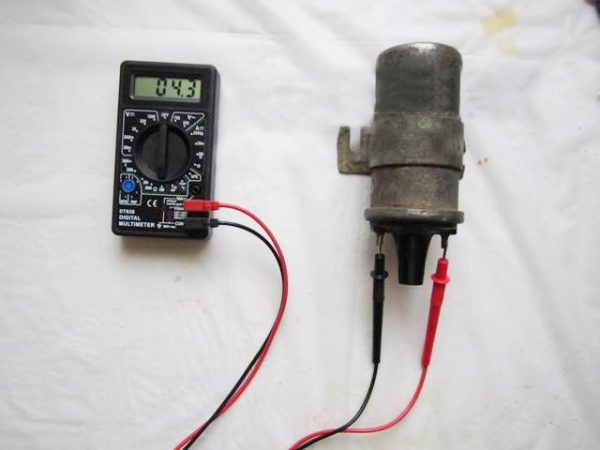 To check the primary winding of the ignition coil, a multimeter must be connected to the threaded contacts
To check the primary winding of the ignition coil, a multimeter must be connected to the threaded contacts - To check the secondary winding, we connect one probe of the device to the side contact "B +", and the second to the central one. The working coil should have a resistance of the order of 7,4–9,2 kOhm. If this is not the case, the product must be replaced.

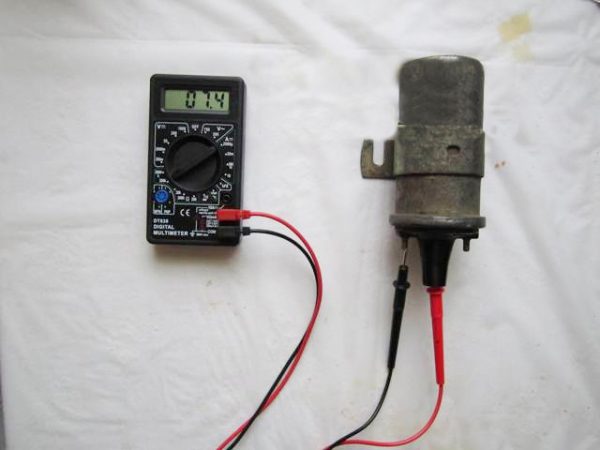 The secondary winding of the coil is checked by connecting the device to the side "B +" and the central contacts
The secondary winding of the coil is checked by connecting the device to the side "B +" and the central contacts
Low voltage circuit
High potential on the ignition coil is formed as a result of applying low voltage to its primary winding. To check the performance of the low voltage circuit, you can use the control (bulb). We connect it to the low voltage terminal of the distributor and ground. If the circuit is working, then the lamp, with the ignition on, should light up at the moment the distributor contacts open and go out when they are closed. If there is no glow at all, then this indicates a malfunction of the coil or conductors in the primary circuit. When the lamp is lit, regardless of the position of the contacts, the problem may be as follows:
- damage to the conductor that goes from the distributor terminal to the lever. Eliminated by restoring damaged wiring;
- breakage of the conductor coming from the movable disk to the housing. The malfunction is treated, as in the previous paragraph;
- oxide formation on the contacts. In this case, cleaning and adjustment of the elements is required.


Checking the contact distributor
The need to check the breaker-distributor appears if there are problems with sparking, and during the diagnostics of the elements of the ignition system, the problem could not be identified.
Cover and Rotor
First of all, we inspect the cover and rotor of the device. The check consists of the following steps:
- We dismantle the distributor cap and inspect it inside and out. It should not have cracks, chips, burnt contacts. If damage is found, the part must be replaced.

 The distributor cap must not have cracks or badly burnt contacts.
The distributor cap must not have cracks or badly burnt contacts. - We check the carbon contact by pressing with a finger. It should be easy to press.
- We check the rotor insulation for breakdown by placing the BB wire from the coil near the rotor electrode and manually closing the contacts of the distributor, after turning on the ignition. If a spark appears between the cable and the electrode, the rotor is considered defective.

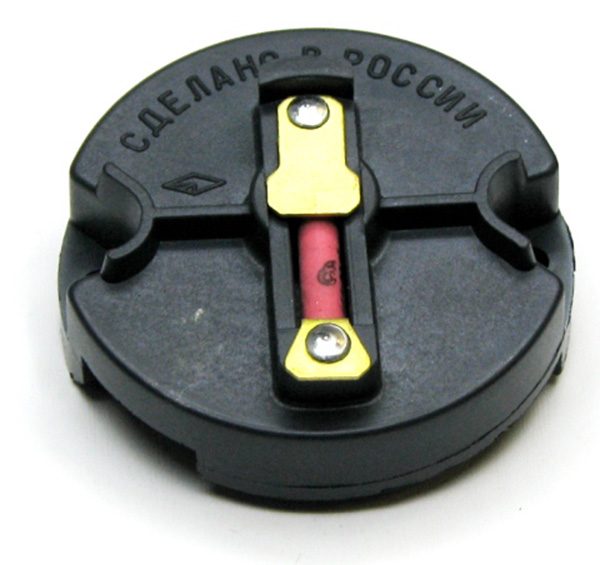 Sometimes the distributor rotor can pierce to ground, so it should also be checked
Sometimes the distributor rotor can pierce to ground, so it should also be checked
contact Group
The main malfunctions of the contact group of the ignition distributor are burnt contacts and the wrong gap between them. In case of burning, the contacts are cleaned with fine sandpaper. In case of severe damage, it is better to replace them. As for the gap itself, to check it, it is necessary to remove the cover of the breaker-distributor and turn the crankshaft of the motor so that the cam on the distributor shaft opens the contacts as much as possible. We check the gap with a probe and if it differs from the norm, then we adjust the contacts by unscrewing the corresponding screws and moving the contact plate.
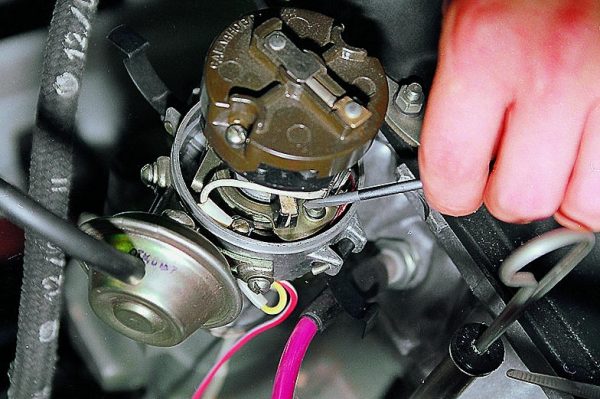

Capacitor
If a capacitor is installed on the distributor of your "six", then sometimes the part may fail as a result of a breakdown. The error appears as follows:
- problems with starting the engine;
- sudden stop of the engine while driving.


You can check an element in the following ways:
- control lamp. We disconnect the wiring coming from the coil and the capacitor wire from the distributor according to the figure. We connect a light bulb to the circuit break and turn on the ignition. If the lamp lights up, it means that the part being checked is broken and needs to be replaced. If not, then it's correct.

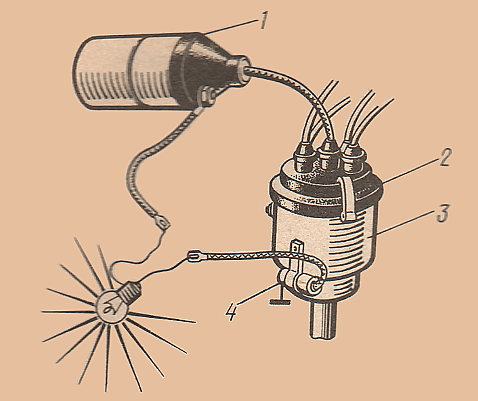 You can check the capacitor using a test light: 1 - ignition coil; 2 - distributor cover; 3 - distributor; 4 - capacitor
You can check the capacitor using a test light: 1 - ignition coil; 2 - distributor cover; 3 - distributor; 4 - capacitor - Coil wire. Disconnect the wires, as in the previous method. Then turn on the ignition and touch the tips of the wires to each other. If sparking occurs, the capacitor is considered faulty. If there is no spark, then the part is working.

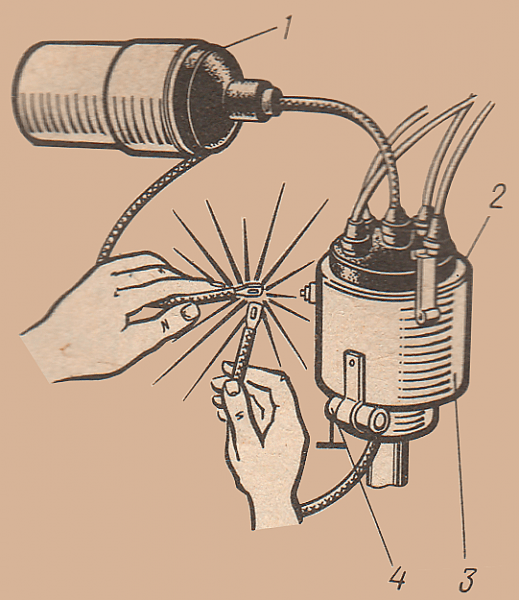 By closing the wire from the coil with the wire from the capacitor, you can determine the health of the latter
By closing the wire from the coil with the wire from the capacitor, you can determine the health of the latter
Checking the contactless distributor
If the "six" is equipped with a contactless ignition system, then checking elements such as candles, a coil, and explosive wires is performed in the same way as with a contact one. The differences are in checking the switch and the Hall sensor installed instead of the contacts.
Hall Sensor
The easiest way to diagnose a Hall sensor is to install a known working item. But since the part may not always be at hand, you have to look for other possible options.
Checking the removed sensor
During the test, the voltage at the output of the sensor is determined. The serviceability of the element removed from the machine is determined according to the presented diagram, applying voltage in the range of 8–14 V.
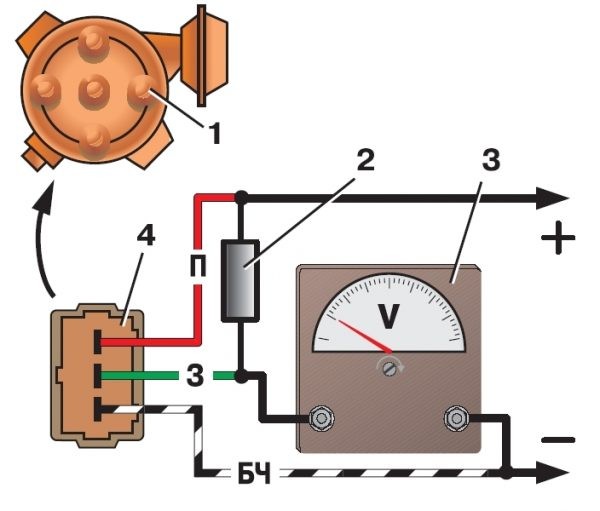

By placing a screwdriver in the gap of the sensor, the voltage should change within 0,3–4 V. If the distributor was removed completely, then by scrolling its shaft, we measure the voltage in the same way.
Checking the sensor without removing
The performance of the Hall sensor can be assessed without dismantling the part from the car, using the above diagram.


The essence of the test is to connect a voltmeter to the corresponding contacts on the sensor connector. After that, turn on the ignition and turn the crankshaft with a special key. The presence of voltage at the output, which corresponds to the above values, will indicate the health of the element.
Video: Hall sensor diagnostics


Watch this video on YouTube
Switch
Since the formation of a spark also depends on the switch, it is therefore necessary to know how this device can also be checked.
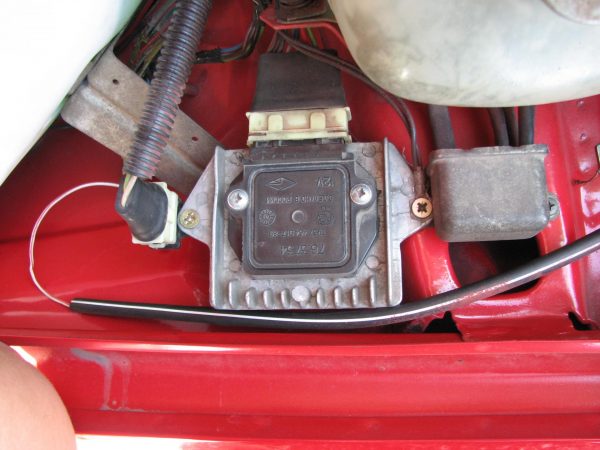

You can purchase a new part or perform the following sequence of actions using the control light:
- We unscrew the nut and remove the brown wire from the “K” contact of the coil.
- In the resulting break in the circuit, we connect a light bulb.
- Turn on the ignition and crank the starter several times. If the switch is working properly, the light will turn on. Otherwise, the diagnosed element will need to be replaced.
Video: checking the ignition switch


Watch this video on YouTube
The performance of the systems and components of the VAZ "six" must be constantly monitored. The occurrence of problems with sparking will not go unnoticed. Troubleshooting and troubleshooting do not require special tools and skills. The minimum set, consisting of keys, a screwdriver and a light bulb, will be quite enough for diagnostics and repair. The main thing is to know and understand how a spark is formed, and what elements of the ignition system can affect its absence or poor quality.

